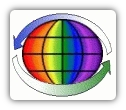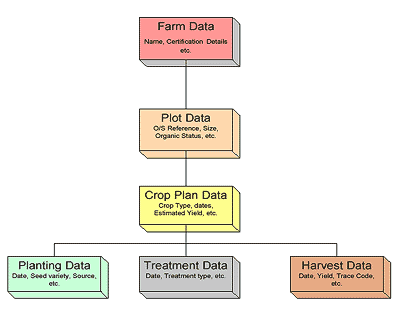Organic Ecology
 Organic Ecology, launched in 1999, was NIP’s first exploration of developing web-based systems for supply chains – in this case, the organic food industry – and is still in use today. The project gained us a lot of experience in how to balance data-sharing and data-privacy in a competitive industry, and how the different relationships need supporting with focussed information.
Organic Ecology, launched in 1999, was NIP’s first exploration of developing web-based systems for supply chains – in this case, the organic food industry – and is still in use today. The project gained us a lot of experience in how to balance data-sharing and data-privacy in a competitive industry, and how the different relationships need supporting with focussed information.
Developed in conjunction with leading organic growers and certifiers, the system consisted of three main areas of functionality:
- A crop management system for organic farmers
- Online management of certification status
- Traceability of farms and harvests
In recent decades, the organic market has grown exponentially, and evidence suggests that this trend is going to continue. This is clearly a two-edged sword for the industry, opening-up many new opportunities, but also creating numerous problems for it to contend with:
- The potentially substantial margins which it offers are attracting many new producers, not all of whom necessarily share the organic movement’s idealism
- Conclusively proving the authenticity of produce: fraud is difficult to trace, and legitimate producers suffer as a result
- As the number of producers grow, so these problems escalate – especially if profit becomes the major incentive
- Proving authenticity will become more than a “nice thing to have”; it will be a necessity
- Increased recordkeeping burden, and auditing/certification overheads

Organic Ecology offered growers worldwide a means of capturing and distributing information about their crops to whoever needs it, both within the industry and beyond to consumers. The system was used in Belgium, Holland, Italy and the USA, as well as in the UK.
All data in the system was owned and controlled by those entering it, so confidentiality was assured; exchanging this data with relevant parties was simple, as all records were in a consistent format, and accessible by certifiers for monitoring. This data included farm name and certification details, etc; plot O/ S reference, size, organic status; crop type, crop plan dates, estimated yield, planting date, seed variety and source, treatment date and type, and harvest date, yield and trace code.
Each farm and harvest could then be reported-on or traced by authorised parties – including consumers – using unique codes to generate reports. Releasing such information to industry customers and/or the public not only demonstrated producer authenticity, but proved the added value of the Organic brand in a sector still dominated by conventional produce
By capturing and distributing information throughout the organic industry (between growers, certifiers and retailers), organic integrity was strengthened and protected, proving authenticity and differentiation of products and, in turn, protecting the industry’s credibility.